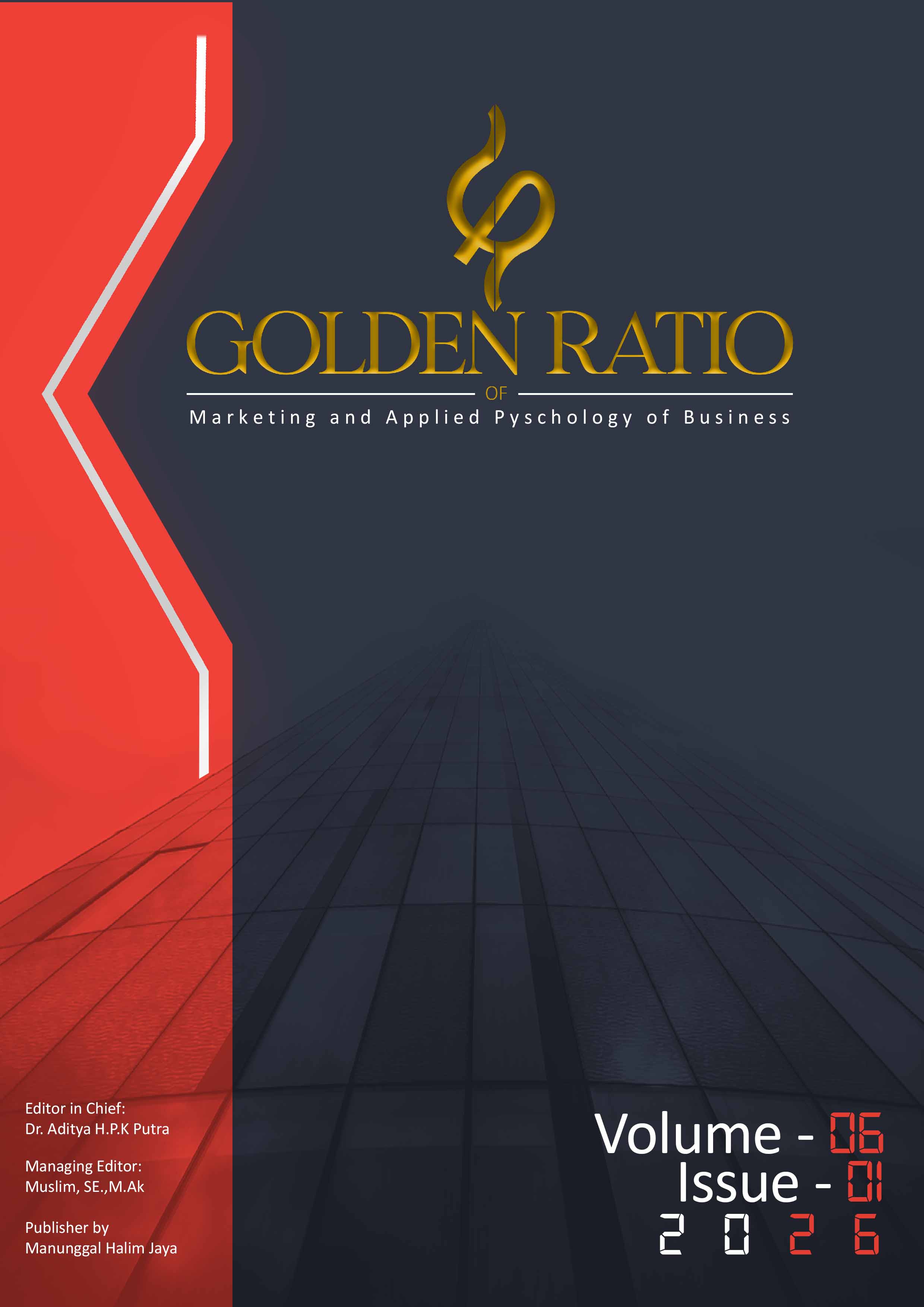Main Article Content
Abstract
This study investigates the impact of organic marketing on consumer purchasing decisions using a case study of Kopi Kenangan, a leading coffee chain in Indonesia. The research analyzes how Instagram features like Feed, Stories, Reels, and Live influence consumer behavior. A total of 100 Instagram users who have purchased Kopi Kenangan products were surveyed through an online questionnaire. The data were analyzed using descriptive statistics and the Structural Equation Modeling Partial Least Squares (SEM-PLS) method. The results show that Instagram Feed and Instagram Stories significantly positively affect purchasing decisions, while Instagram Reels and Live do not show a significant impact. The findings highlight the effectiveness of unpaid digital marketing efforts in shaping consumer preferences and suggest that businesses can leverage organic content on Instagram to enhance customer engagement and drive sales.
Keywords
Article Details

This work is licensed under a Creative Commons Attribution-ShareAlike 4.0 International License.
References
- Ajzen, I. (1991). The theory of planned behavior. Organizational Behavior and Human Decision Processes, 50(2), 179–211.
- Anjelita R. (2021). Strategi Marketing: Brand Kopi Kenangan. Looks great. https://looksgreat.id/blog/strategi-marketing-brand-kopi-kenangan.
- Dwivedi, Y. K., et al. (2021). Setting the future of digital and social media marketing research: Perspectives and research propositions. International Journal of Information Management, 59, 102168.
- Fulgoni GM. (2015). How brands use social media to ignite marketing and drive growth: Measurement of paid social media appears solid, but are the metrics for organic social overstated? J Advert Res. 55(3):232–236. https://doi.org/10.2501/JAR-2015-004.
- Ghozali I. (2014). Structural Equation Modelling, Metode Alternatif dengan Partial Least Squares (PLS). Semarang Badan Penerbit Univ Diponegoro. Ed ke-4.
- Hair JF, Hult GTM, Ringle CM, Sarstedt M, Danks NP, Ray S. (2021). An Introduction to Structural Equation Modeling. Springer.
- Heggde G, Shainesh G. (2018). Social media marketing: Emerging concepts and applications.
- Kaplan, A. M., & Haenlein, M. (2010). Users of the world, unite! The challenges and opportunities of social media. Business Horizons, 53(1), 59–68.
- Kemp S. (2022a). Digital 2022: Global Overview Report. We are Soc. https://datareportal.com/reports/digital-2022-global-overview-report.
- Kemp S. (2022b). Digital 2022 : Indonesia. We Are Soc.
- Kotler, P., & Keller, K. L. (2009). Marketing Management (13th ed.). Pearson Education.
- Liu L, Lee MKO, Liu R, Chen J. (2018). Trust transfer in social media brand communities: The role of consumer engagement. Int J Inf Manage. 41(28):1–13. https://doi.org/10.1016/j.ijinfomgt.2018.02.006
- Pink D. (2022). Organic Marketing : 5 Organic Marketing Tactics. Masterclass.
- Rastati R. (2018). Media Literasi Bagi Digital Natives: Perspektif Generasi Z di Jakarta. J Kwangsan.
- Setyowati D. (2022). Startup Kuliner RI Disuntik Rp9 T per 2021, Kopi Kenangan Jadi Unicorn. Katadata.
- Sudarsono A. (2020). Konsep E-Bisnis. Yayasan Kita Menulis.
- Wielki J. (2010). The Impact of the Internet on the development of web-based business models. J Internet Bank Commer.
References
Ajzen, I. (1991). The theory of planned behavior. Organizational Behavior and Human Decision Processes, 50(2), 179–211.
Anjelita R. (2021). Strategi Marketing: Brand Kopi Kenangan. Looks great. https://looksgreat.id/blog/strategi-marketing-brand-kopi-kenangan.
Dwivedi, Y. K., et al. (2021). Setting the future of digital and social media marketing research: Perspectives and research propositions. International Journal of Information Management, 59, 102168.
Fulgoni GM. (2015). How brands use social media to ignite marketing and drive growth: Measurement of paid social media appears solid, but are the metrics for organic social overstated? J Advert Res. 55(3):232–236. https://doi.org/10.2501/JAR-2015-004.
Ghozali I. (2014). Structural Equation Modelling, Metode Alternatif dengan Partial Least Squares (PLS). Semarang Badan Penerbit Univ Diponegoro. Ed ke-4.
Hair JF, Hult GTM, Ringle CM, Sarstedt M, Danks NP, Ray S. (2021). An Introduction to Structural Equation Modeling. Springer.
Heggde G, Shainesh G. (2018). Social media marketing: Emerging concepts and applications.
Kaplan, A. M., & Haenlein, M. (2010). Users of the world, unite! The challenges and opportunities of social media. Business Horizons, 53(1), 59–68.
Kemp S. (2022a). Digital 2022: Global Overview Report. We are Soc. https://datareportal.com/reports/digital-2022-global-overview-report.
Kemp S. (2022b). Digital 2022 : Indonesia. We Are Soc.
Kotler, P., & Keller, K. L. (2009). Marketing Management (13th ed.). Pearson Education.
Liu L, Lee MKO, Liu R, Chen J. (2018). Trust transfer in social media brand communities: The role of consumer engagement. Int J Inf Manage. 41(28):1–13. https://doi.org/10.1016/j.ijinfomgt.2018.02.006
Pink D. (2022). Organic Marketing : 5 Organic Marketing Tactics. Masterclass.
Rastati R. (2018). Media Literasi Bagi Digital Natives: Perspektif Generasi Z di Jakarta. J Kwangsan.
Setyowati D. (2022). Startup Kuliner RI Disuntik Rp9 T per 2021, Kopi Kenangan Jadi Unicorn. Katadata.
Sudarsono A. (2020). Konsep E-Bisnis. Yayasan Kita Menulis.
Wielki J. (2010). The Impact of the Internet on the development of web-based business models. J Internet Bank Commer.
